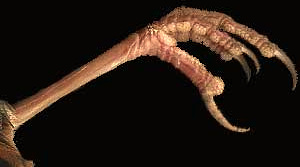
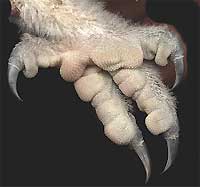
Just look at the differences between the above foot of a White-throated Sparrow, Zonotrichia albicollis, and that of the nestling of a Barred Owl, Strix varia, shown at the right.
In most backyards and local neighborhoods, the vast majority of bird species will have feet similar to those of the sparrow, because they'll all belong to the huge Passerine or Perching Bird Order, the Passeriformes. The sparrow's feet are well adapted for perching on twigs and scratching on the ground for small seeds. The owls feet are just as well adapted for overpowering prey and hold onto prey, maybe with the sharp talons stabbing into the prey's flesh, injuring or killing it.
Maybe the most famous non-passerine feet are those seen below on a Muscovy Duck:
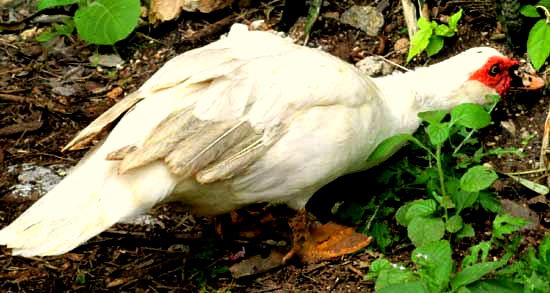
As you can see, ducks possess webs between the front three toes, for paddling water. In our backyards, maybe the most likely other-kind-of-foot is shown below:
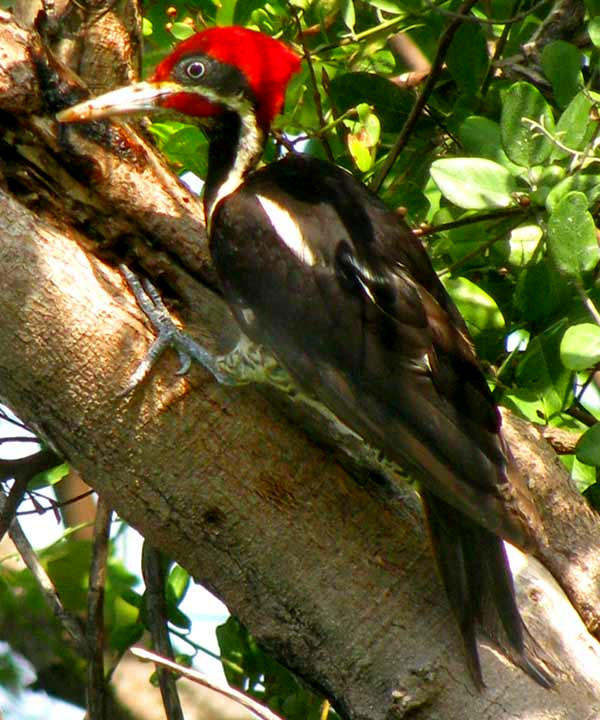
Woodpeckers have "zygodactyl" feet. Zygodactyly is the condition among birds of having two toes pointing forward and two backward. Can you see it in the above picture? Members of the Cuckoo, Parrot and Toucan Families also have zygodactyl feet. Zygodactylous feet are especially good for clinging to the sides of trees, the lower two toes (instead of the usual one) better supporting the bird's weight.
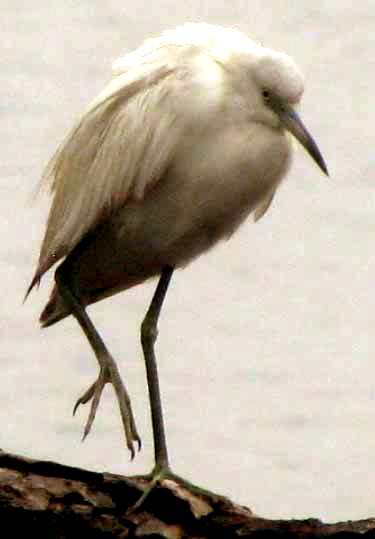
Wading birds, like the immature Little Blue Heron, Egretta caerulea, at the right, have especially long toes, which keep them from miring down when wading through soft mud. However, if you want to see long toes carried to an extreme, you should go to the American Tropics where you can see feet like those in the drawing below, made by Jim Conrad in Mexico. The bird is a Northern Jaçana, Jacana spinosa.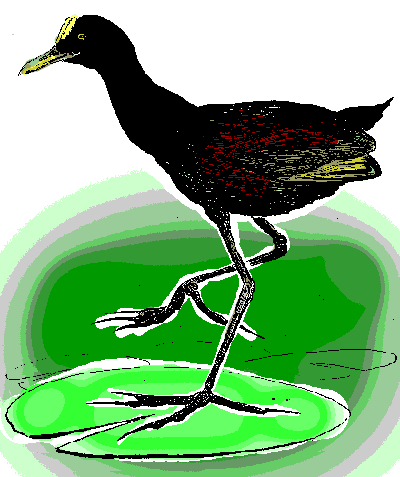
When a jaçana's toes and claws are spread out, they cover an area of up to 5x8 inches (12x20cms). Of course this is also an adaptation, one enabling the bird to slowly walk across the surface of yielding floating vegetation, such as a lake's surface of waterlily pads. As the birds walk, with their beak and toes they flip over the vegetation, looking for aquatic insects, snails, worms, small fish and the like.
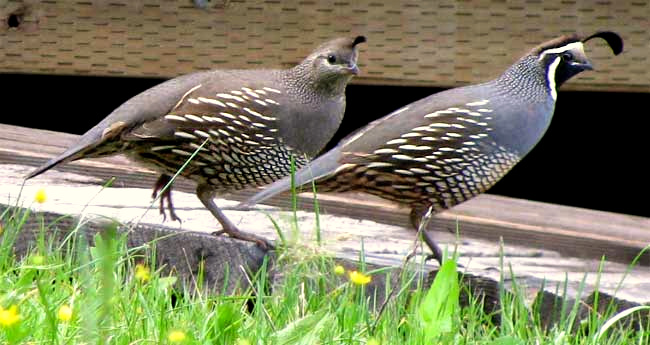
As the above picture shows, ground-living birds like pheasants, chickens and these California Quail, Lophortyx californicus, have feet that are somewhat similar to songbirds, but with noticeably more powerful toes bearing well developed nails, perfect for scratching the ground, mainly turning up seeds and insects.
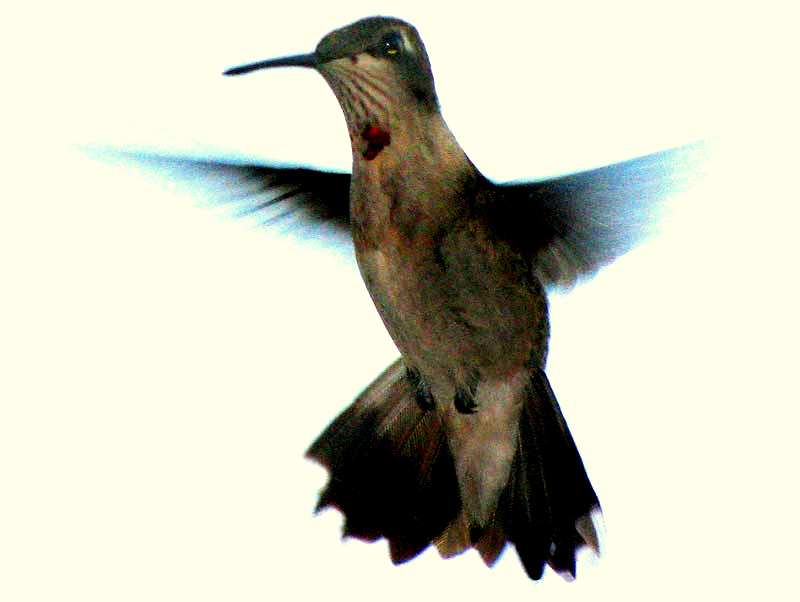
In contrast, some bird-kinds bear small, relatively weak feet, such as the immature male Ruby-throated Hummingbird, Archilochus colubris, at the right. Hummingbirds take their nectar while hovering in the air, so they don't grasp or manipulate their food. Large, powerful feet would be dead weight for them. Therefore, smallness and lightness is their very effective feet adaptation. Swallows who also catch their feet in the air and don't grasp their prey have similar feet.
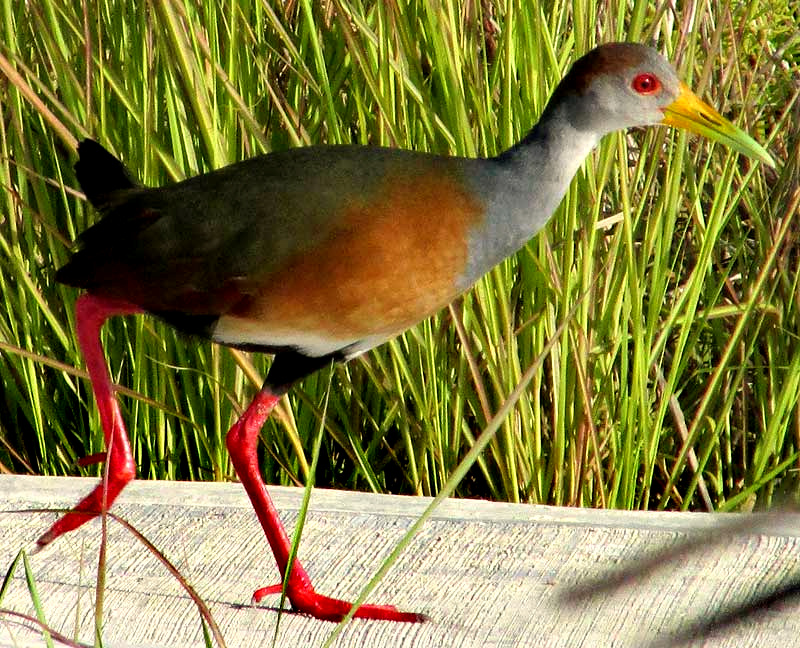
The average passerine/songbird foot has four toes (the technical name for that condition is anisodactyly), and typically the first big toe, the hallux, is turned backward. Being opposite the other toes, like the thumb on us humans, it enables the foot to firmly grasp its perch. Some birds, such as the Gray-necked Wood-Rail, Aramides cajanea, shown at the left -- as well as many other rails, cranes, and members of the Pheasant Family -- have their thumb-like halluces (plural of hallux) growing higher up their legs so that they never touch the ground. Think how slow people walk flat-footed with their heels touching the ground, but runners' heels don't touch the ground while running. See how the rail's hallux doesn't touch the ground?
Swifts, which may rest hanging on vertical walls, have all their toes turned forward, or can turn them forward when they want. Among kingfishers, two toes are fused for part of their length. Among cormorants, gannets and pelicans, all four toes are connected by webbing.
Claws on a bird's foot are actually specialized scales formed into horny sheaths. Claws grow continuously and are worn away through daily activity. Claws are usually called talons when referring to birds of prey such as owls, eagles and hawks.